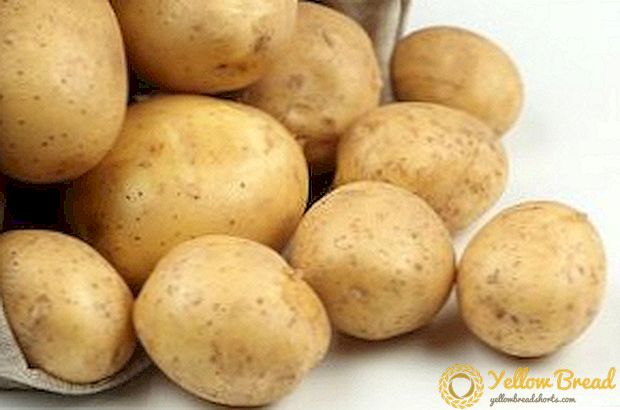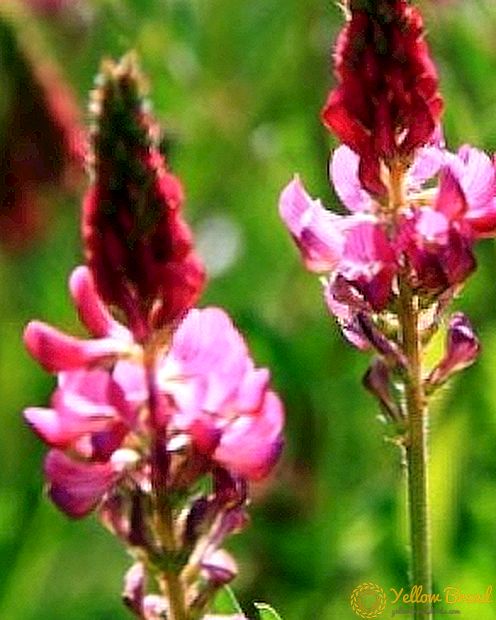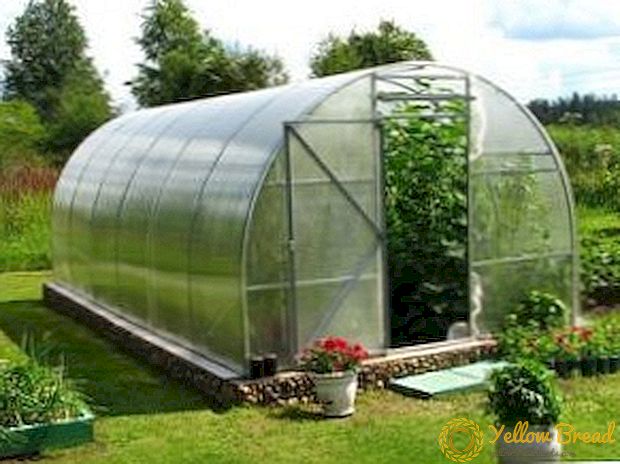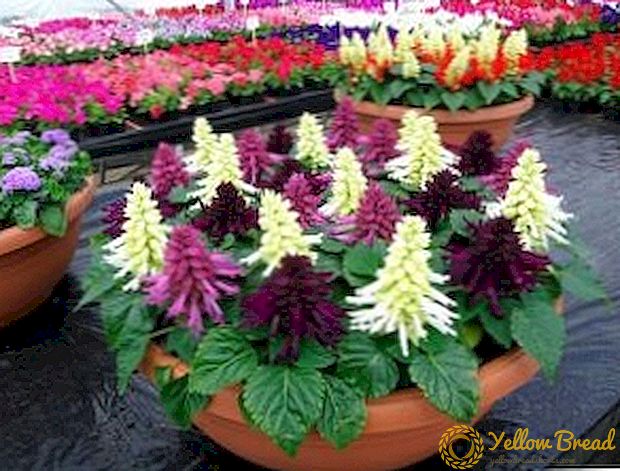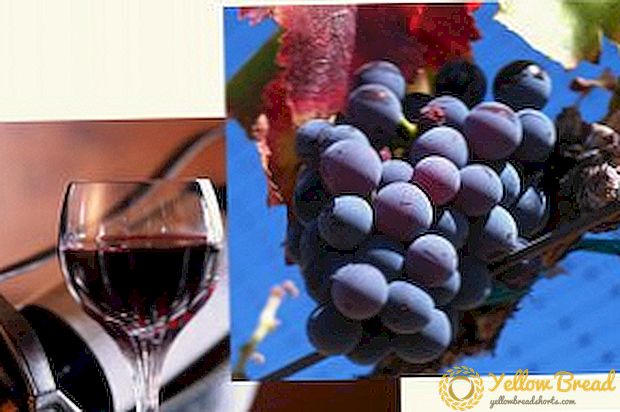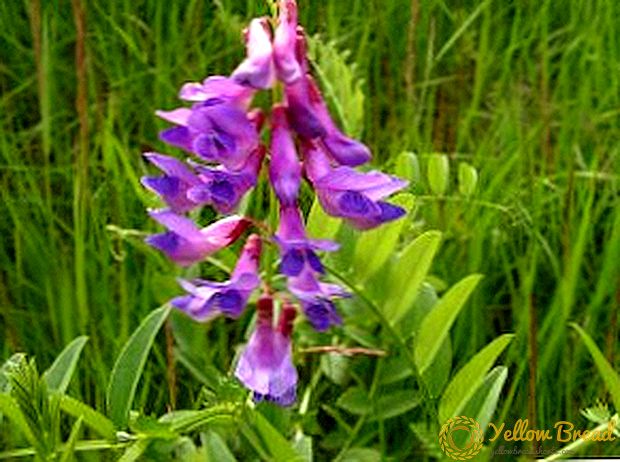 “Renovation” translated from French means “re-bloom”, and lovers of feast on juicy berries over a long period of time know what a plant, like remontant strawberries, is a tasty and fragrant berry, pleasing with fruit all summer and even in early autumn.
“Renovation” translated from French means “re-bloom”, and lovers of feast on juicy berries over a long period of time know what a plant, like remontant strawberries, is a tasty and fragrant berry, pleasing with fruit all summer and even in early autumn.
- How to choose the seedlings remontantnoy strawberries
- Choosing a landing site
- Lighting
- The soil
- Predecessors
- Planting remontant strawberries
- Optimal timing
- Site preparation
- Optimal scheme
- Care for remontant strawberries
- Preventive treatment
- Watering, weeding and loosening the soil
- Mulching between rows to preserve moisture
- Top dressing
- Pruning
- Preparing for the winter
- Breeding methods
- Usa
- Bushes division
How to choose the seedlings remontantnoy strawberries
When buying planting material It is necessary to pay attention to the appearance of the plant:
- bushes must be well formed;
- must have at least 3-4 leaflets rich green, without inclusions and other flaws;
- developed root system: the roots of the plant must be at least 6 cm;
- bush heart (central kidney) should be large, pink.It is believed that the larger the diameter of the heart, the greater the likelihood of a bountiful harvest the next year after planting in a new place.
Choosing a landing site
For planting plants choose land with flat surface or slightly sloping south-west. In the lowlands, seedlings are not planted, as there it will be prone to disease, and because of the cool air, the yield of berries will suffer.
On the southern slope, plants are also not planted, as snow melts early there, and the revived bushes can freeze out under spring frosts. A place for strawberries should not be much blown. - better if it is protected from the wind.
Lighting
This plant grows well and gives abundant fruiting only in a brightly lit place. On such sites, berries are fragrant and sweet. In the shade, the plant bears bad fruit, and the berries cannot boast with taste, as they are watery and sour.
The soil
For planting strawberries choose places with light loamy soil. The selected area is cleared of stones and weeds, if possible, producing mulching of the soil. Remontant varieties grow well on mulch from rotted straw, hay, sideratov, sawdust, pine needles.

Lightweight soil warms up better, and the berries appear earlier, moisture is better retained, and berries lying on the ground are less likely to be affected by gray rot.
Predecessors
It is desirable that on the site chosen for planting such crops as dill, radish, lettuce, garlic or peas would grow before. After they are harvested, the plot is sown with oats, mustard or beans. Parsley planted near strawberries scares slugs. Sage and borage have a beneficial effect on the growth of bushes. Repair Strawberry undesirable to plant near potatoes, since they have common pests.
Planting remontant strawberries
People who want to grow strawberry remontantnu on their plot, you need to realize that the planting and care for it is done in a certain way.
Before planting, dig in the soil and, if possible, loosen it.Make small holes with a depth of 20 cm, bringing to the bottom of a little nutrient mixture of biohumus, ash and compost. Seedlings with the lower leaves removed, together with a clod of earth, are placed in the hole, sprinkled with earth. Pay attention to the growth point being on the same level with the ground.
Optimal timing
Depending on the region, its climatic conditions determine the time when it is necessary to plant remontantnuyu strawberries. The plant has an active growth of the root system and leaves twice a year - in spring and summer: based on this seedlings are planted in the spring and in the second half of summer.
In spring, seedlings are planted in open ground, as soon as the top layer of soil warms up to a temperature of 12 ° C. In summer, seedlings can be planted at the end of July (approximately from the 25th) until mid-August.
For remontant varieties, spring planting is ideal in all respects. The plant has time to adapt and root well. If the plant is planted in the second half of May, then the first berries will appear in mid-July and will delight you until the end of September.
Site preparation
Growing remontant strawberries in the open field has its own characteristics. An important role in obtaining a future crop is the preparation of the soil for planting. The soil should be light. To facilitate the structure of the soil, it brings nutrients.

On 1 part of the soil contribute 1 part of the compost, 10% wood ash, to the resulting volume add 20% peat and 10% coniferous sawdust. In the form of fertilizers, nitrogen, potassium and phosphorus are introduced, which are so necessary for the growth and health of the plant.
Optimal scheme
Each owner chooses for himself the optimal scheme of planting strawberries. There are such types of planting strawberries:
- Planting strawberries in rows. Plants are planted in a row at a distance of 30 cm from each other, spans between the rows leave about 70 cm. This method of planting is used for plants that grow well in width, throwing out mustaches.
- Carpet landing method. As a rule, this method is used for strawberries without any form. The distance between the bushes should be 25 cm for small-fruited strawberries and 40 cm - for large-fruited.
Care for remontant strawberries
This strawberry differs from other varieties in that as soon as the first berries are gathered, the fruits of the next harvest are immediately tied. No matter how wonderful the strawberry remontant berry is, growing and caring for it requires a lot of work and care. Since the remontant strawberry gives several harvests per season, it requires more and more watering with additional feeding, and this should be remembered.
Preventive treatment
Before planting, pay attention to the fact that the earth does not contain clusters of wireworm larvae and colorado beetles. To destroy the larvae, the soil is treated with ammonia water. In order for the planted seedlings to grow strong, not exposed to diseases and pests, it is necessary to carry out in spring and autumn preventive actions:
- chlorine with copper oxide process plants in case of detection of gray rot. It affects plants in cold and wet weather, spots appear on the berries, then - white fluffy bloom. To save the harvest, all infected berries are destroyed;
- A weak solution of potassium permanganate or colloidal sulfur is used to treat plants from powdery mildew.Its sign is the defeat of the leaves, which curl and become brown in color: the affected bushes are destroyed.
Watering, weeding and loosening the soil
Repair strawberries require more frequent watering, especially for hot days, when the temperature warms by 30 degrees or more. Try to keep the ground all the time soaked with moisture 3-5 cm deep.

To obtain a rich harvest it is necessary to take care of timely weeding and loosening the soil. Very carefully, trying not to damage the roots and whiskers of the plant, perform this procedure. In case you initially promulgated the soil (added peat, sawdust, straw), then you will not need to frequently loosen the ground.
Mulching between rows to preserve moisture
Soil mulching with pine and spruce needles helps not only to retain moisture, ensure the root system of bushes with oxygen, but also significantly enrich the taste of the berries.
Recently, the method of growing berries under covering materials has become widely used; it is also called mulching. A black film is laid out on the soil prepared for planting, cross-sections are made in it, in which strawberry bushes are planted.The film retains the necessary moisture, protects against weeds, creates optimal conditions for plant growth.
Top dressing
After watering produce fertilizing plants. For this purpose, grass (nettle and wormwood) on the water under the open sun is drawn for a week. This mixture contains nutrients that are necessary for the normal development of the plant. Infusion is passed through the fabric in order not to bring grass seeds in the strawberry rows. Also for feeding use infusion of mullein or bird droppings.
Pruning
In the spring, after harvesting, pruning of the old, dried-up last year’s leaves is done in case you did not have time to do it in the fall. After pruning the plants and the aisle are treated with special preparations for diseases, fungi, mold and pests. Many amateur gardeners prefer to cut remontany strawberries in the spring.
Preparing for the winter
As soon as the plants cease to bear fruit, they must prepare for wintering:
- old plants are fed for recuperation and abundant fruiting in the next season;
- in late August - early September, all flower stalks are cut;
- after the onset of frost, the leaves are cut from the plant and the whiskers are cut;
- the bushes are covered for the winter at the established sub-zero temperature: fallen foliage or straw is suitable for this purpose.
Breeding methods
Many people are interested in the question of how to propagate reparative strawberries, what are the difficulties and what to pay attention to.
Usa
In order to preserve valuable traits belonging to a particular variety, breeding is done with a mustache. It should be remembered that for breeding only the first generation mustache is used. Reproduction with a mustache does not require special skills, only attention. When caring for strawberry bushes, up to 5 whiskers are left on a healthy bush, no more than - the rest are removed. For planting use the most developed and healthy sockets.
Bushes division
One of the ways of reproduction of strawberry is to divide a healthy bush into separate horns in such a way that each plant remains in abundance of roots. Bushes are dividing at the end of summer. - by early September, all planting material must be planted, otherwise young plants will not have time to settle down before the onset of frost.
Growing bushes from seeds is a rather painstaking and troublesome task, but the resulting bushes will be completely healthy.
Knowledge of how to care for remontant strawberries will help to get decent yields of high quality berries throughout the season.

